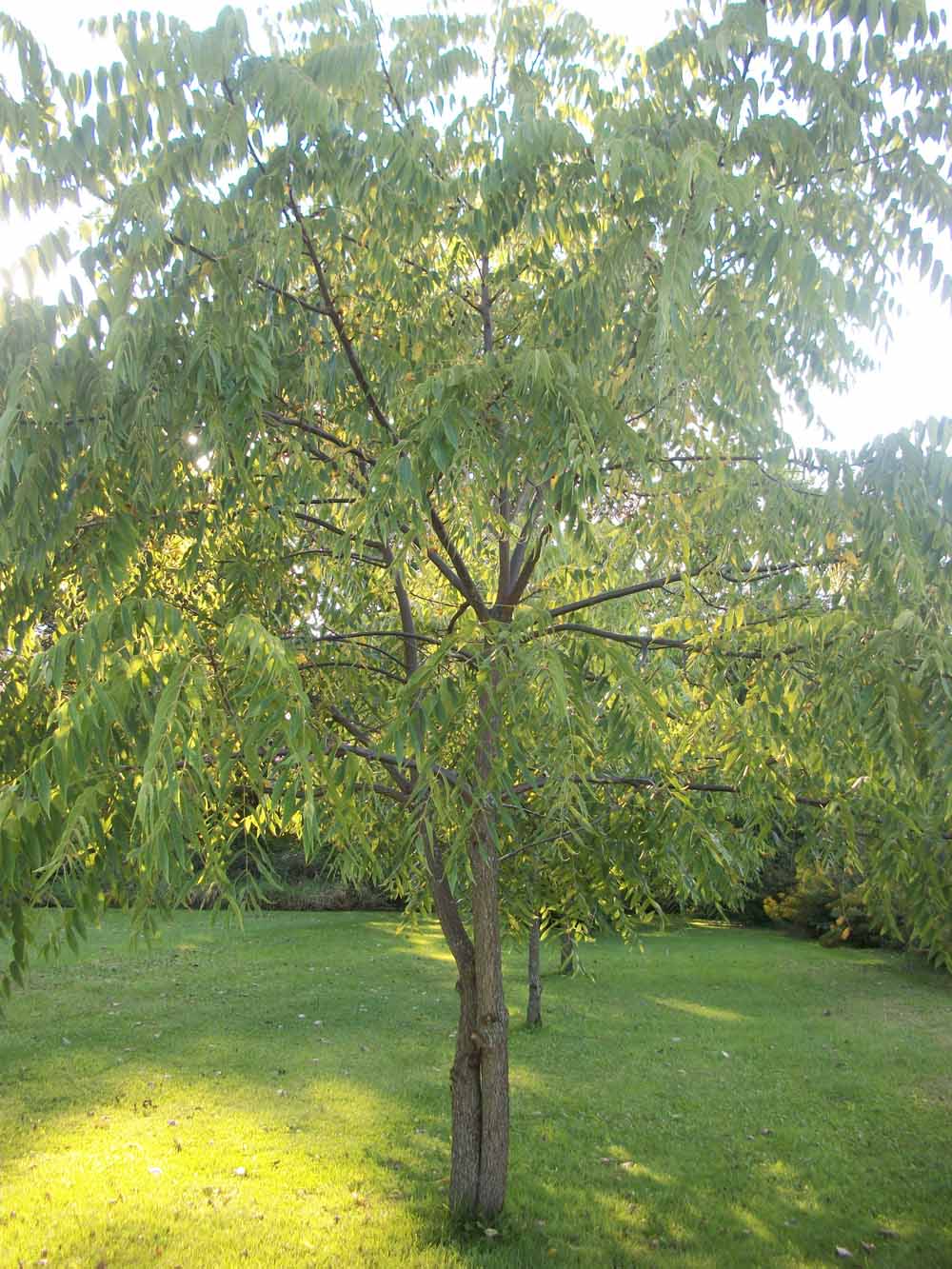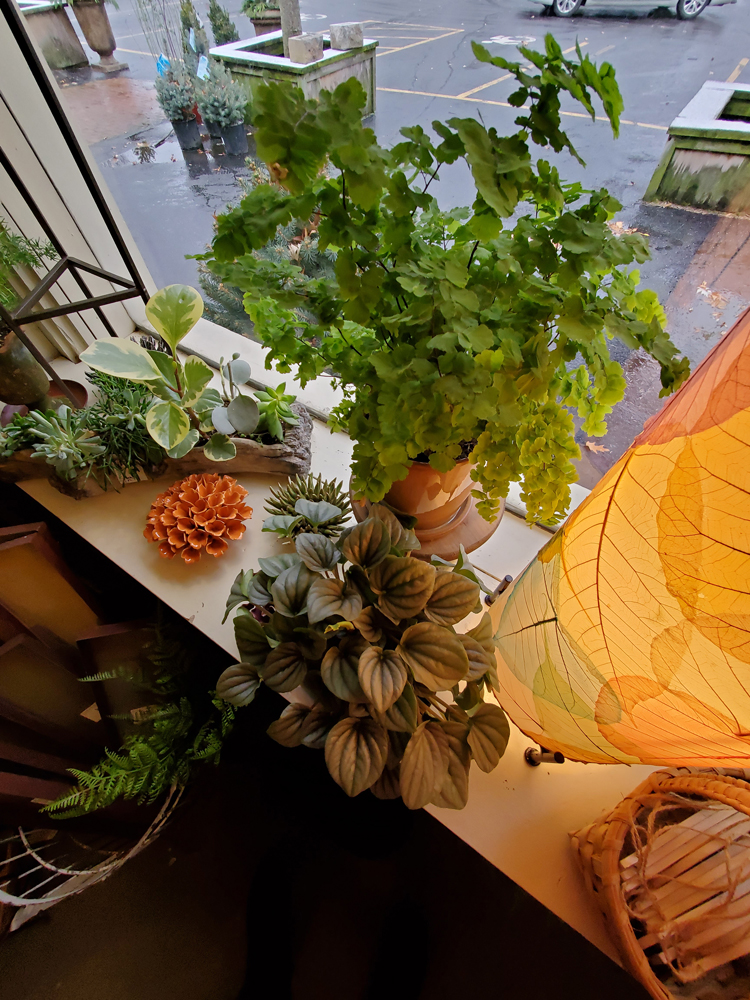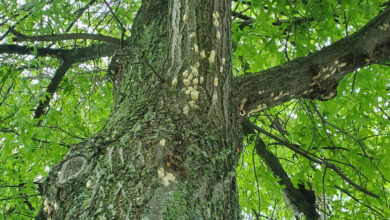Plant a nut tree for variety

My grandmother must have planted them sometime in the 1920s – a number of nut trees in the yard of the house in which I grew up in Bergen. By the time I came along in the 1960s, the trees were huge. A whopping butternut with a massive trunk and leaf canopy; a tall impressive heartnut with nuts shaped like little valentines; and several black walnuts.
With the exception of the heartnut, the trees still stand and are very impressive in size.
As majestic as I found them, my mother was not a huge fan of the nut trees. They created a mess in the spring when their blossoms – or catkins – especially those from the butternut, fell and littered the driveway and any vehicle parked there. Then in the fall, the nuts themselves created another mess when they fell. The autumn mess was compounded by the flurry of squirrel activity in the yard. Our swings hung from a log that was placed between the high branches of the heartnut and one black walnut, and it was not unusual to be hit with falling nut pieces created by snacking squirrels.
The worst offense was the toxins produced by the trees. Black walnuts, in particular, are known for their toxicity – roots, nut husks and leaves secrete a substance into the soil called juglone and it can kill neighboring plants. Tomatoes and apples are especially sensitive. Grass was even challenging to grow beneath the butternut tree and the canopies of the nut trees were so large, flowers did not do well in portions of the yard – fortunately there were three acres upon which to garden.
I don’t remember ever trying to harvest and eat the nuts. It’s quite a process, especially with black walnuts as the green, outer husk must be removed – it has an intense, pungent odor and can turn your hands black – before you even get to the hard inner shell which must be cracked before you get to the nut meat. My uncle would occasionally come to collect some of the nuts, but mostly it was the squirrels that benefited.
So, fully aware of all the potential drawbacks, I planted my own little black walnut (Juglans nigra) grove in my backyard about 13 years ago.
I purchased little one-foot, bare-root seedlings from a local mail order company and planted the eight little “sticks” at the back of my yard in very nice soil, but well away from my vegetable and flower beds.
Half of them survived – the four I planted on the northwest border of the yard are the ones that lived. They now appear to be doing well and produce a handful of nuts each year – I haven’t sampled them yet.
The trees suffered greatly in the freak snowstorm we had back on Columbus Day weekend in 2006. I didn’t know if they would survive, as each tree lost several branches, but they have come back and as my adult son remarked recently, “They actually look like trees.”
I don’t have any burning desire to have black walnuts to harvest for baking, etc., but I think it’s fun to grow nuts in addition to flowers, shrubs, vegetables and fruit. I think mature black walnuts are especially spectacular, even though I probably won’t be around to see mine reach majestic heights.
Black walnuts are native to the northeastern U.S. and are very hardy. They are a long-lived tree and can exceed 200 years in age. The diameter of the trunk typically reaches 3-4 feet. Because of their hardiness, they are a good choice for planting locally. Many varieties of nuts do best in warmer zones.
The trees like deep, fertile soil that is moist, but well-drained. Sandy, gravelly or rocky soils are not good for black walnut.
Planting black walnuts can even be seen as an investment. The wood of a mature tree (30-35 years) is very valuable. I’ve read they can bring in thousands of dollars when sold for lumber. The wood is highly prized because of its color, strength, durability, dimensional stability after drying and excellent machining qualities.
Your yard may not be well-suited for the challenges of a black walnut, but nurseries are offering hardy varieties of almonds and pecans which might be fun and different to try both for their beauty and for the novelty of the harvest.





